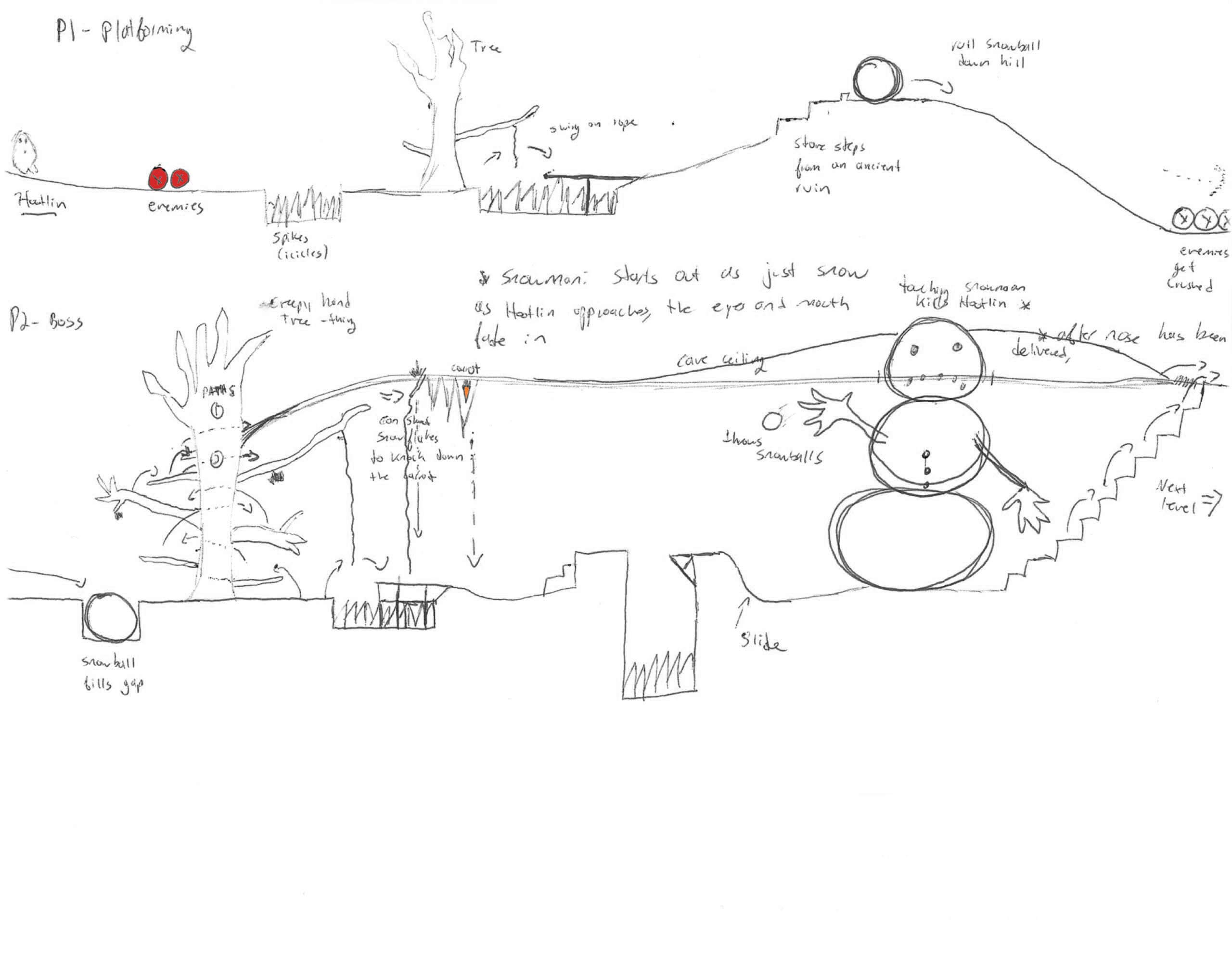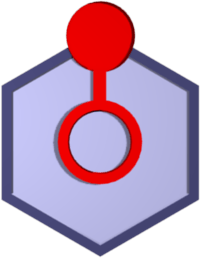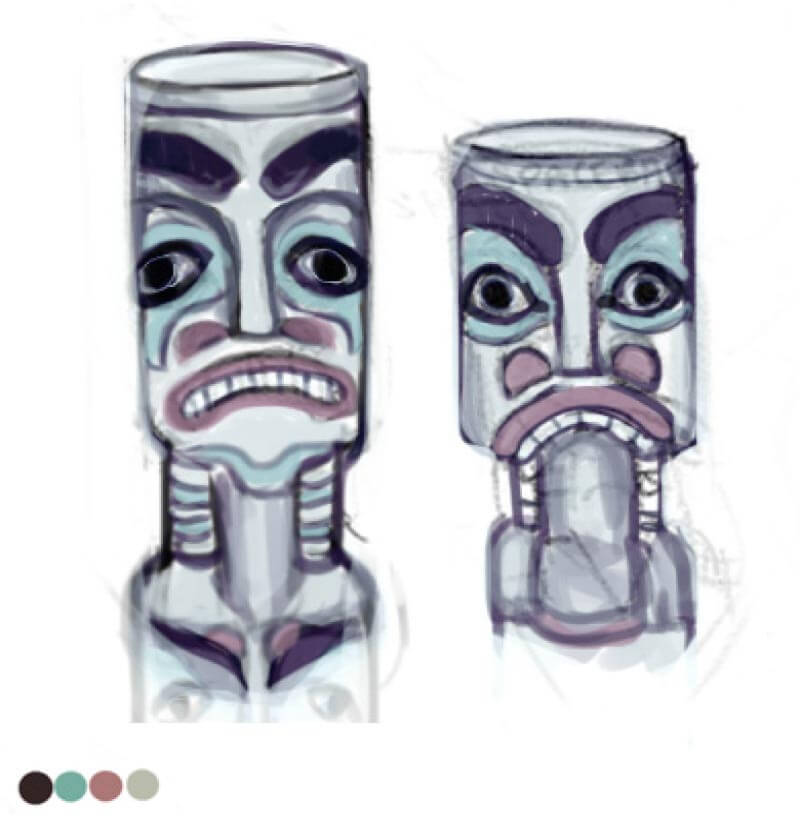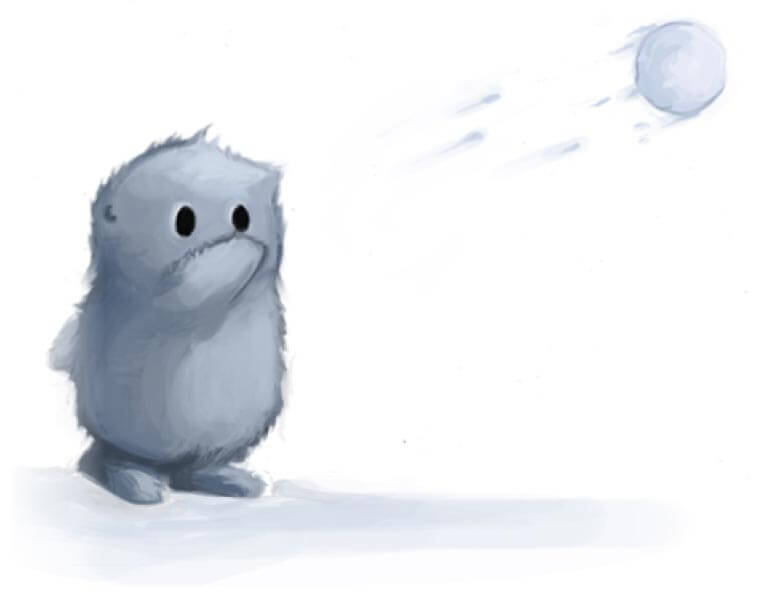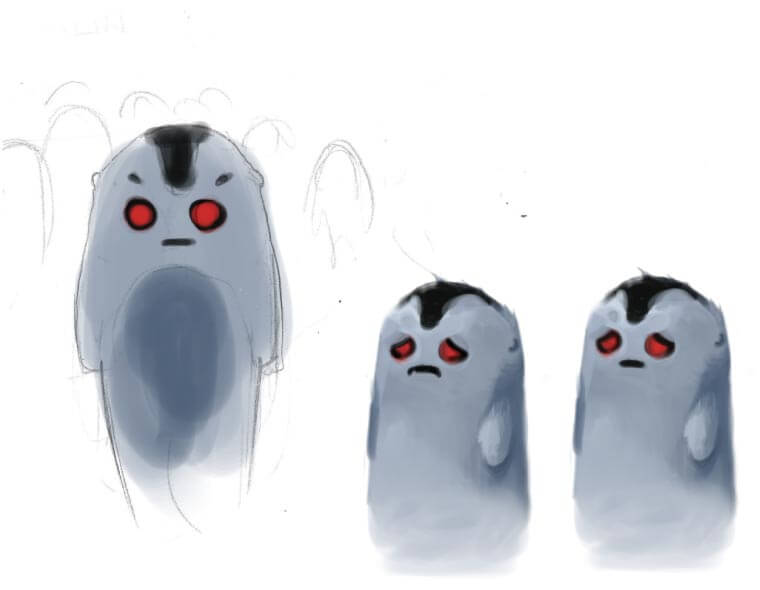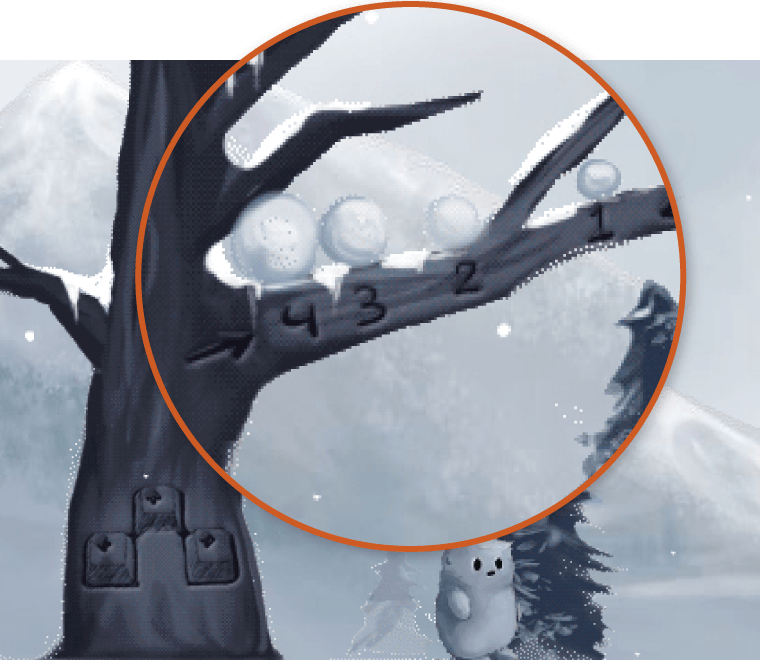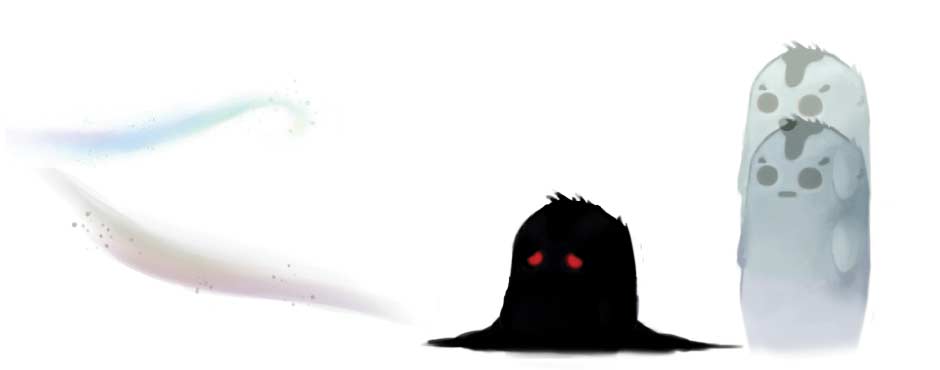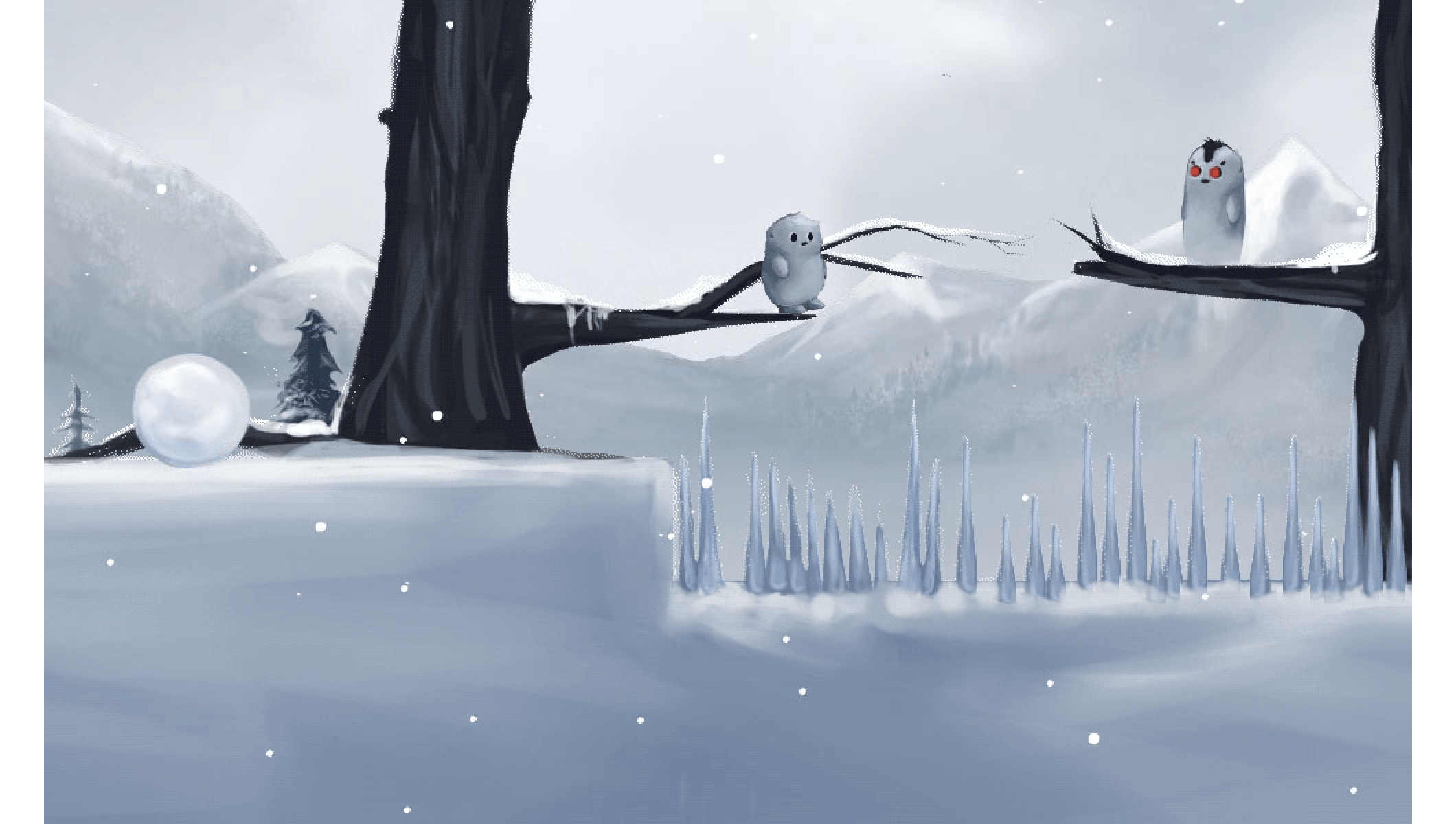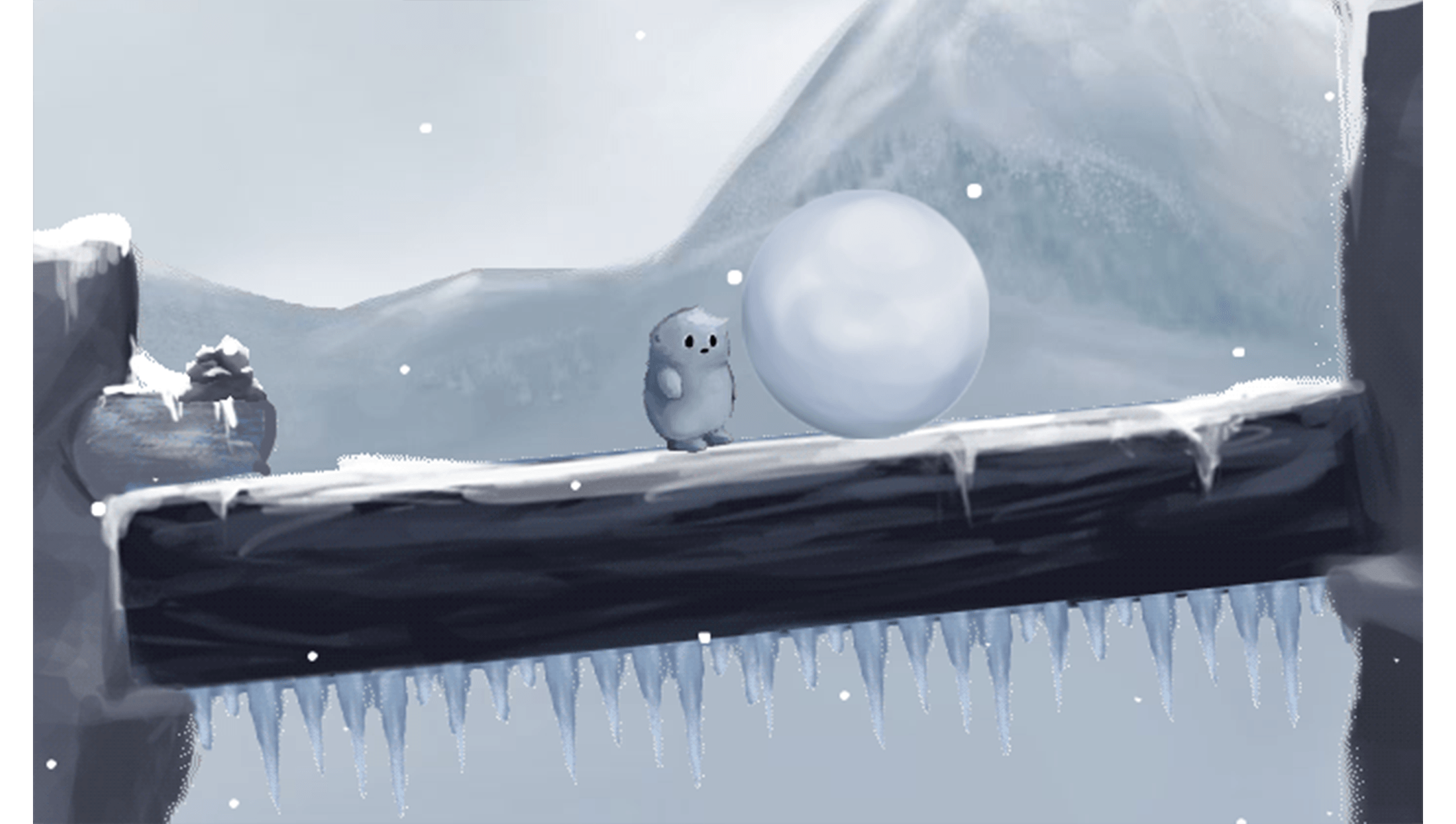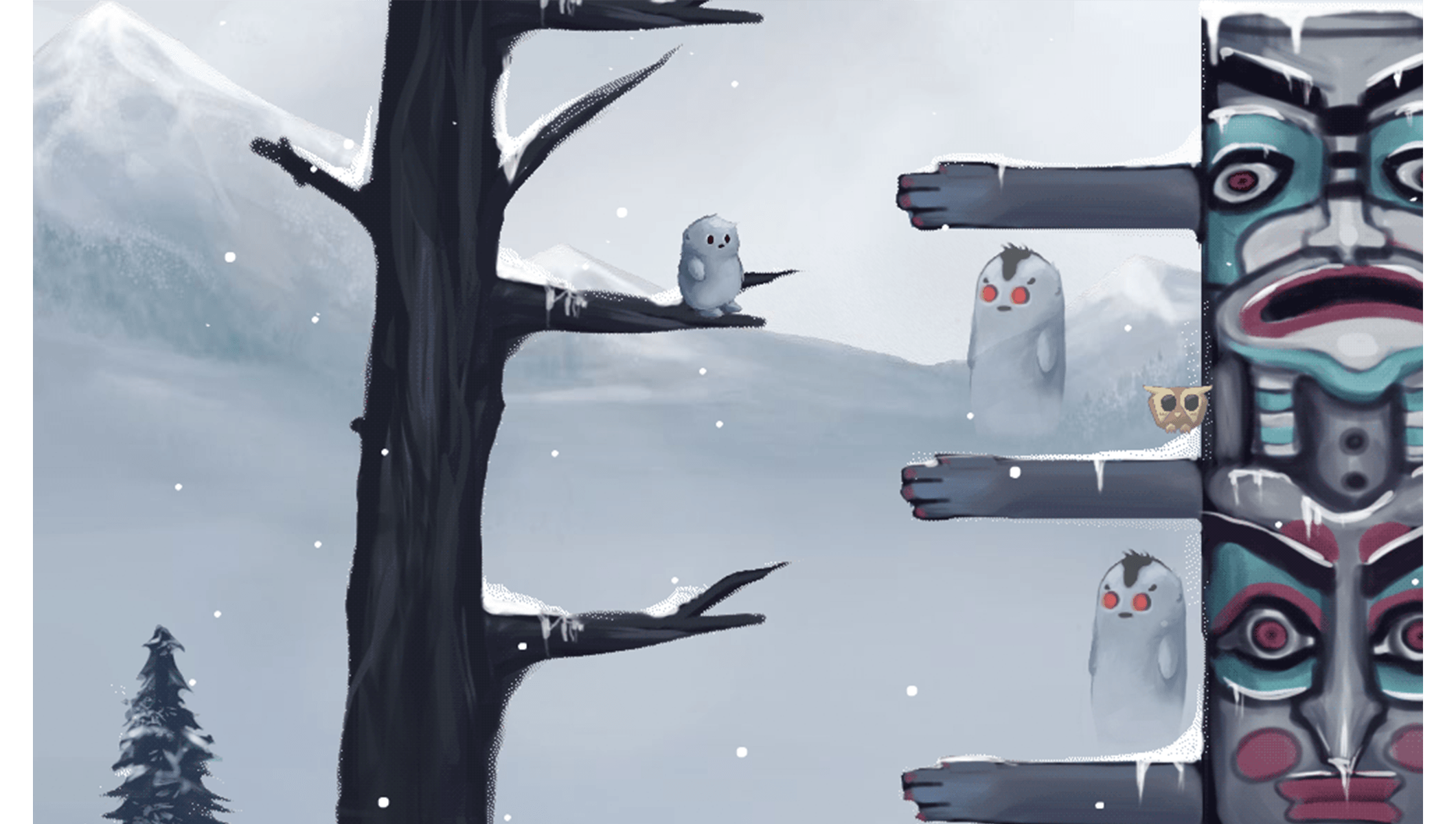SKETCHING
This is an early sketch of the first level of Hootlin. Here I explored mechanics such as enemies, spikes, jumping and swinging, and pushing, then combining those mechanics in an extraordinary situation to create the snowman boss fight. In this design the player could either kill him or rescue his carrot nose from an icicle and then pass without harming him, furthering a sense of player agency.
